Now and Then: 2023 Mercedes-AMG SL 63 Meets 1987 Mercedes-Benz 560 SL

The SL is one of Mercedes’ enduring icons.
Over almost 70 years, the Super Leicht has gone from a repurposed race car to a swanky boulevard cruiser, and somewhere between the two, depending on generation. The latest model embraces both sides of this family lineage. Now an exclusively AMG product, the R232 comes with an expected pedigree—but it’s also larger, becoming a 2+2 for the first time since the R107-generation drop-top of the ‘70s and ’80s.
So we’ve brought one of those along for the ride. The R107 made for a very similar proposition half a century ago: sportier than what came before, with a V8 for the first time, yet also a more luxurious, spacious interior.
What's changed in the past 36 years? What, if anything, has stayed the same? For three picture-perfect days at the height of summer, we tooled around in both to find out.
(Editor’s Note: This feature wouldn’t have been possible without the kind folks at Turo, the car-rental app. They had reached out about getting us into this 1987 560 SL, and it happened to coincide with our SL 63 time. Booking the car was as easy as selecting the dates we wanted. Thanks, Jessica!)
Meeting the Classic
The 1987 560 SL looks positively dainty next to today’s model. It’s a trick of the simple styling from Joseph Gallitzendörfer and Friedrich Geiger; in truth it’s only around five inches stubbier and narrower. Some of the softness is, like Grandpa Simpson’s affinity for garlic-belts, a product of the style at the time. Big sidewalls wrapped around modest 15-inch wheels? Check. Spindly A-pillars for excellent visibility but, er, less safety? Check. There’s not an aggressive line on the R107, unlike the perma-scowl on the 63. The rectilinear approach gives it a timeless sort of elegance.
This isn’t some garage queen, either. This two-seater—very few R107s came with the optional second-row seating—has some 178,000 km on the odometer when we first meet. There are the expected signs of wear in the cabin, from the soft sheen of the leather seats to the uneven coloring of the thick carpet. The 560’s become a bit temperamental in its advancing years, with a slight fluctuation in idle at stops. It needs a steady diet of 94 to operate at its best.
Under the hood is the largest V8 Mercedes had put in a two-door at the time, a 5,559-cubic-centimeter behemoth. When it was new, this V8 put out a quoted 227 horsepower and 287 pound-feet of torque. If I had to guess, I’d assume one pony may have left the corral every year or two. The 560 showed up in the final years of the remarkably long-lived R107, which means it sends that power rearward via a four-speed automatic transmission.
The New Kid
This is just the fourth Mercedes built exclusively by the folks in Affalterbach, following the SLS, GT, and GT 4-Door Coupe. It shares nothing with the SL that came before, sitting on a new aluminium space frame. Torsional rigidity is substantially improved, even over the GT Roadster.
On this side of the pond, the SL doesn’t just feature a V8; that was the only engine option at launch. (Mercedes has since added a four-cylinder SL 43.) AMG’s turbocharged sledgehammer of a 4.0-liter spits out 577 hp and 590 lb-ft in the SL 63. Put another way, it’s over double the figures of the classic. The new kid’s got over double the forward gears to play with, too: Mercedes’ wet-clutch Speedshift MCT has nine ratios, and it’s able to swap between them in a fraction of a second.
Another double: driven wheels. Helping put the power down is an AMG-tweaked version of Merc’s 4MATIC all-wheel drive system.
Like Great-Great-Grandfather, Like Son
You might think the chasms in age, performance, and tech would render these two about as similar as schnitzel and salad.
But there is a through-line in their everyday manners. The 560 SL is a reminder of what cruising used to be about: effortless progress and minimal fuss. It glides along the road, those chubby sidewalls dissipating most bumps before they can make their way into the cabin. There’s surprisingly little cowl shake in the ol’ classic, too. Naturally the 63 has precisely none of that, and while it has a much more nuggety ride, it’s modern-day supple on its softest drive mode.
True to its mission, the elder SL is well-mannered with the top down, even at highway speeds. I do have to duck a little to get out of the buffeting zone, but otherwise, talk and tunes can both happen, easy-peasy. The six-three is in its element here, and there's even heating vents around the headrests for when the mercury starts to dip.
Both cars have fiddly roof routines. The 560 requires a specific tool to ratchet the top loose, on both sides of the cabin. Don’t forget the tonneau cover release behind the driver’s seat, and then fold it all away until there’s a click—again, on both sides of the car. My best time is about two minutes when working solo.
The SL 63 is quicker; it’s a fully automated affair, and it’ll drop its fabric in about 15 seconds, and at speeds of up to 37 mph (60 km/h). But Mercedes hasn’t resisted the temptation of putting the controls in a touchscreen. The digital slider to lower the top is frustratingly inconsistent; you better hope you don’t drive over a particularly thick leaf, never mind a bump. It’s possible to double-tap the roof button itself to operate the top, but you’ll still have to keep your digit there.
Forging A New Path
36 years of progress can’t be ignored, however. The SL 63’s wicked-smart electronic brain and adjustable dang-near-everything allows the driver to tailor the experience to their tastes. Want an overly-sensitive throttle, the sort that makes it nearly impossible to drive smoothly? You can do that with the Sport+ mode—though really, it feels best experienced on a track. Except tracking the SL makes little sense when the GT exists.
Stick to around eight-tenths, however, and the SL impresses. That variable AWD system adjusts the fore-aft balance based on drive mode, maintaining the feel of rear-drive agility with the safety net of front-axle power. Further aiding the new kid is its standard rear-steer, which angles the rear wheels in the opposite direction of the fronts at low speeds, and moves them in-line at higher speeds for increased stability. At this laidback pace, the SL’s two-ton curb weight isn’t quite so noticeable. The Active Ride Control suspension keeps the roadster resolutely flat through the corners.
And the noise. AMG makes Europe’s muscle car motors, and the open-air SL experience provides occupants with the full show from those quad pipes. It’s a deep and thunderous howl, with a fusillade of pops and bangs in sportier drive modes.
The hilariously over-thick steering wheel is quick and accurate, but light on weight and feedback. Sportier modes add artificial levels of heft; its here that the Custom setting really comes into its own. Overall, the SL is hyper-competent, but not the most engaging drive in this exclusive segment.
The 560 SL wasn’t the sharpest drive available in 1987, either. It relishes its role as a plush grand tourer, smoothly slurring between gears. It makes a good eight-pot rumble when pushed, sure, but not the sort to twist necks from a block away. There’s good weight from the dainty steering wheel rim, enough to trust the car’s responses. Introduce pedal to carpet and the nose rises like the bow of a boat, but there’s no histrionics from the rear rubber. In the best way, the classic reminds me of being in a wave pool as a kid. That magic moment when you jump before a wave, and the water carries you, like a strong, steady hand? It’s that.
People-Watching Space
Both of these drop-tops are in their element cruising the city at sunset. The 560’s cabin is ‘80s chic, all brown everything. There’s not a lot to distract here: there’s an aftermarket head unit but I never use it, and the analog dials are as straight-forward as they are legible. The squishy seats prove mega-comfortable on longer drives, even if they lack the massaging function of the new car’s thrones. With the roof down, there’s less opportunity to bonk your head on its exposed metal.
About the only thing neue SL shares with old is the quartet of air vents atop its dashboard. The AMG is all about eye-catching features: here’s a giant, angle-adjustable central touchscreen; there’s a huge, full-color head-up display. The digital instrument cluster is adjustable, both in theme and in content. This car’s black leather is buttery-soft, and the seats are appropriately bolstered given the 63’s capabilities. Fit and finish is uniformly excellent, and that Burmester sound system pumps out quality tunes. I’m surprised to find a few plasticky bits in the center console and along the doors though, especially considering the new car’s elevated price.
Different Times, Different Goals
Back when new, the 560 SL went for around $48,000 USD. Accounting for inflation, that’s about $129,000 today. They're worth substantially less now—and if you find one on Turo, like this example, you can get a taste of SL life for the about as much as a mid-level hotel room.
The Mercedes-AMG SL 63 hunts in an even more elite class. This Canadian-spec tester has an as-tested price of over $228,000 CAD; in America, it’d be knocking on the door of $200,000. Any semblance of semi-attainability is gone, and in that sense, the SL is a departure from the template its '80s-era sibling has laid down.
But this is still a cruiser par excellence, and a purchase decision driving by passion, not pricing. Like its forebearer, the SL 63 cocoons its occupants in the day's luxury zeitgeist; a shelter with the top up, and a feast for the senses with it down. Both cars are at their happiest when cruising—but the new car also offers SL buyers 911 Turbo levels of performance to go along with that.
Become an AutoGuide insider. Get the latest from the automotive world first by subscribing to our newsletter here.

Kyle began his automotive obsession before he even started school, courtesy of a remote control Porsche and various LEGO sets. He later studied advertising and graphic design at Humber College, which led him to writing about cars (both real and digital). He is now a proud member of the Automobile Journalists Association of Canada (AJAC), where he was the Journalist of the Year runner-up for 2021.
More by Kyle Patrick



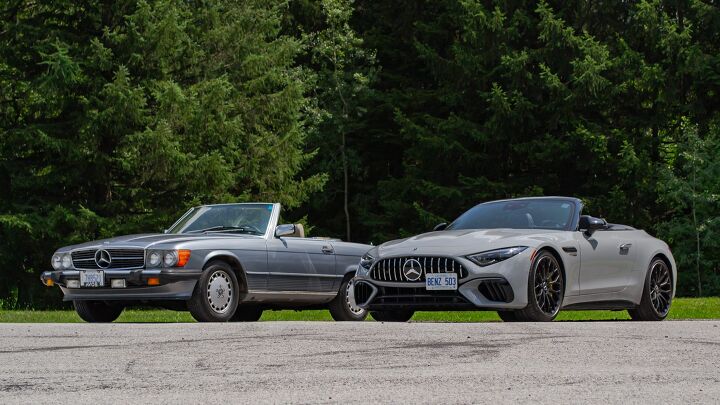




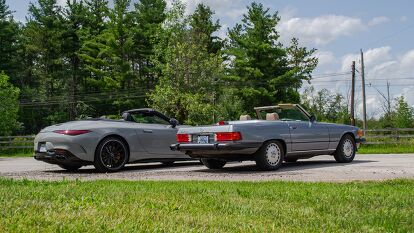










































































































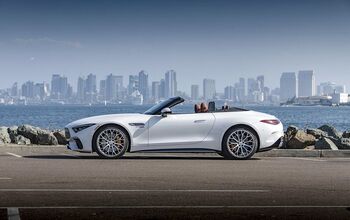

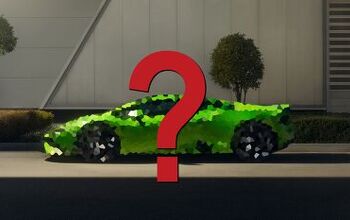


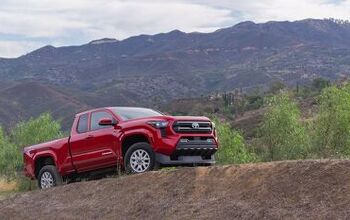
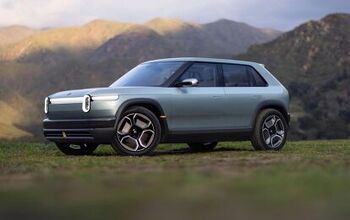




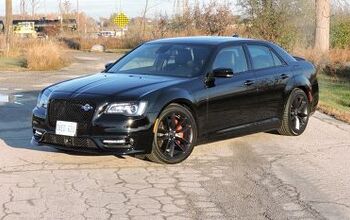




Comments
Join the conversation
Really? An ugly, very ugly, no color grey? MB killed all the good reds. From beautiful bright reds that kept getting darker to that awful Cardinal red--terrible, to now showcasing grey. Is it a celebrity car or one you now want to hide? One you're ashamed to drive? One you leave garaged and drive your Ferrari instead.
The latest Benzes are so ugly I can't bring myself to replace my 2012
The 560 had a stylish hard top for winter etc, I guess that option remains long gone